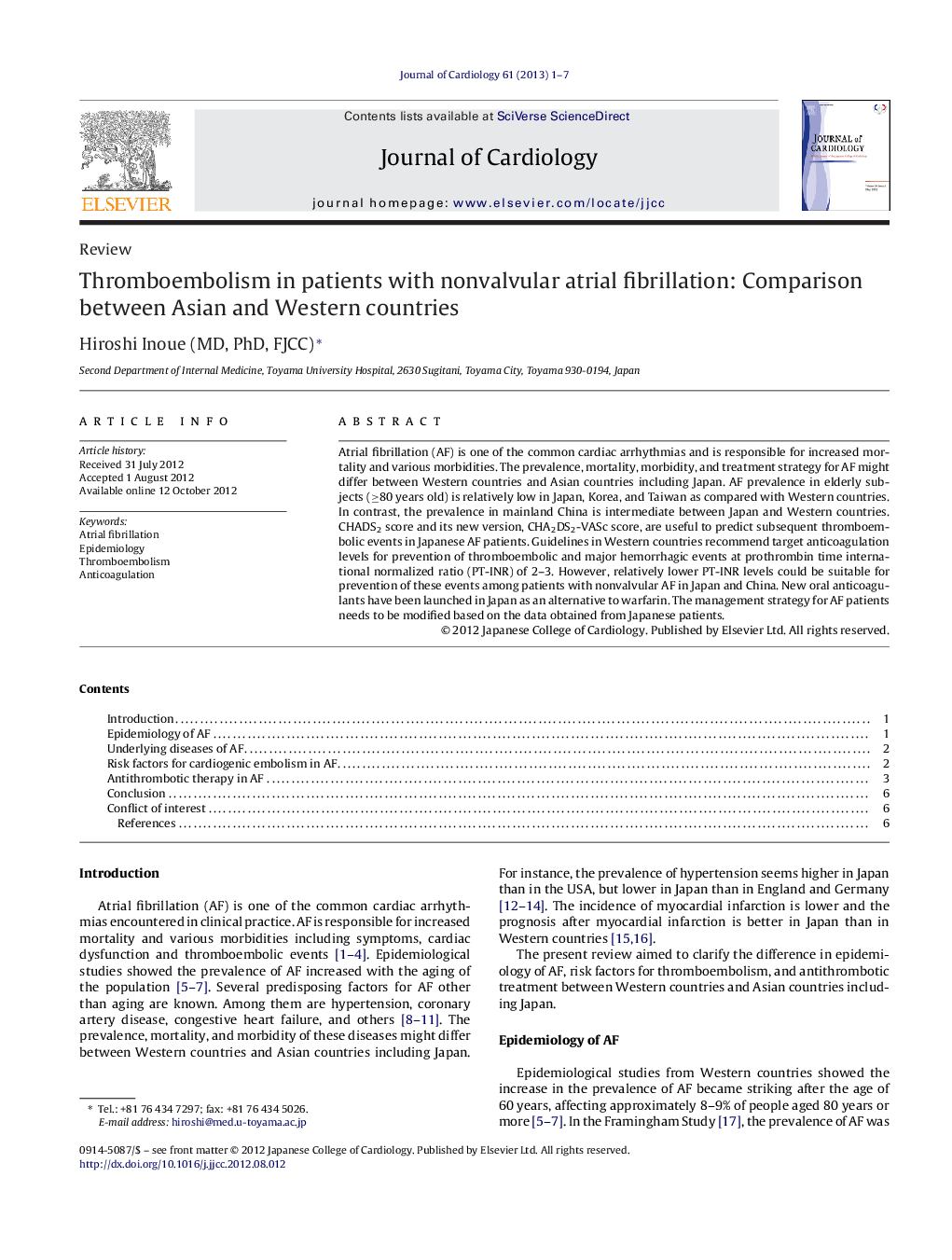| Article ID | Journal | Published Year | Pages | File Type |
|---|---|---|---|---|
| 2963211 | Journal of Cardiology | 2013 | 7 Pages |
Atrial fibrillation (AF) is one of the common cardiac arrhythmias and is responsible for increased mortality and various morbidities. The prevalence, mortality, morbidity, and treatment strategy for AF might differ between Western countries and Asian countries including Japan. AF prevalence in elderly subjects (≥80 years old) is relatively low in Japan, Korea, and Taiwan as compared with Western countries. In contrast, the prevalence in mainland China is intermediate between Japan and Western countries. CHADS2 score and its new version, CHA2DS2-VASc score, are useful to predict subsequent thromboembolic events in Japanese AF patients. Guidelines in Western countries recommend target anticoagulation levels for prevention of thromboembolic and major hemorrhagic events at prothrombin time international normalized ratio (PT-INR) of 2–3. However, relatively lower PT-INR levels could be suitable for prevention of these events among patients with nonvalvular AF in Japan and China. New oral anticoagulants have been launched in Japan as an alternative to warfarin. The management strategy for AF patients needs to be modified based on the data obtained from Japanese patients.
